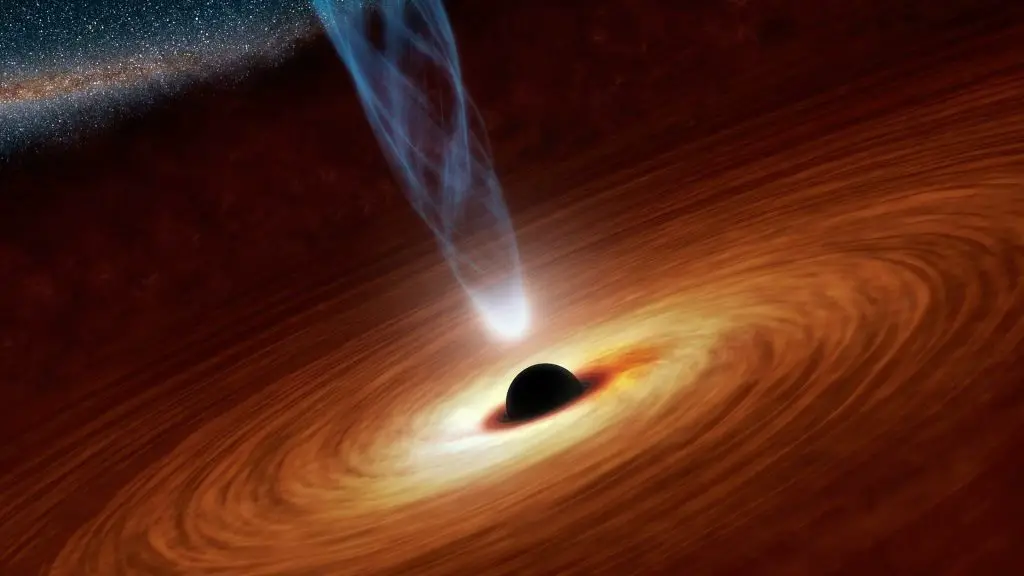You may have heard numerous facts about black holes eating stars, black holes’ gravity, and more. Despite hearing all these unique facts about the black hole, you may still be confused about the actual meaning of a black hole. This article will give you the best explanation of black holes, the mystery of black holes in space, and more.
What is a Black Hole?
A black hole is an astronomical object with a strong gravitational pull that nothing, including light, can get out of it. Even though, light is the fastest known entity in the universe. Yet, it lacks the potential of escaping a black hole, due to strong gravity. A black hole’s gravity is extremely strong as a matter within the hole has been compressed into a small space.
Since light cannot escape a black hole, no one can see through the hole. Hence whatever is happening inside a black hole is invisible to us. The surface of a black hole is called the event horizon. The event horizon is generally described as a point of no return. This implies that objects that enter a black hole will surely remain there forever. Once an object passes the event horizon, it tends to collapse into the black hole singularity.
At this point, space, and time are no longer applicable to these objects. So even if we decide to send a spacecraft to a black hole, we may lack the ability to control its movement once it crosses the event horizon.
When was the black hole discovered?
For centuries, astronomers have continued to study our universe without realizing that black holes are even in existence. Hence, the theory of black holes remains unknown to scientists until the early 20th century. In 1905, Albert Einstein, the famous scientist developed the theory of relativity and updated the modern understanding of physics.
In 1916, Karl Schwarzschild, a German physicist used Einstein’s theory of relativity to discover the first modern solution that best describes a black hole. According to Karl’s theory, any mass can become a black hole when compressed tightly enough. At that time, scientists were amazed by this theory.
But the concept of a black hole remains theoretical for almost the next six decades. In 1967, Astrophysicist Jocelyn Bell Burnell from Northern Ireland discovered neutron stars, when she was still a postgraduate student. This discovery increased scientists’ desire to find a real black hole and study gravitationally collapsed objects. After the discovery of Neutron stars, an American Astronomer, John Wheeler proceeded to coin the black hole.
At that time, scientists were waiting to see when the real black hole will be discovered.
In 1971, astronomers discovered the first physical black hole in the constellation Cygnus the swan. But how were the first black holes discovered? Several astronomers conducted independent research in the constellation Cygnus.
During this research, they discovered x-rays coming from the direction of bright blue stars moving around a black mysterious object. They concluded that the x-rays were created from the materials of the bright star being torn apart and falling into the black object. Scientists concluded that this object is actually a black hole and they named this first black hole Cygnus X-1.
What lies inside a black hole?
Blackholes are generally referred to as the monsters of the cosmos that eats up everything that comes their way. From tiny asteroids to gigantic stars, black holes are always open to eating up objects that enter their event horizon. Since they have been consuming items that come their way, you may begin to imagine what lies inside the black hole?
Many scientists have raised numerous suggestions in the past. Some scientists assume that the black hole is the portal to another universe. Others assume it is a wormhole to facilitate interstellar travels.
For decades before the discovery of the first black hole, it has remained a theoretical aspect of physics. Even after its discovery, we are yet to get closer to a black hole to study what lies inside it. The problem with sending a spacecraft to study a black hole is distance. In fact, the closest black hole to earth is the HR 6819 System. This black hole was discovered in 2020 and it is located 1,000 light-years away from earth.
Since we cannot cover the distance of 1,000 light-years to study the closest black hole to earth, we have relied on a theory to conclude what lies inside a black hole. According to this theory, all the matter within a black hole is crushed into a gravitational singularity. The gravitational singularity is a point that lies at the center of the black hole. It comprises a large amount of mass, infinitely curved space-time, and infinite density.
The laws of physics are no longer applicable at this point. Cosmologists and astrophysicists have been fascinated by the idea of singularity over the past few decades. So they worked so hard to develop a theory for singularity that lies within the black hole. According to this theory, the black hole could exist as an externally collapsing object which will hit the singularity after infinite time.
Conclusion
Blackholes are one of the most mysterious objects found in the universe. Although we are yet to explore one, we still used our advanced telescopes to study several black holes from a distance.
When you intend to learn detailed information about black holes, you should devote your time to reading through the article published above.




